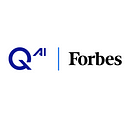2020’s Inflation Rates Feels Like a Lifetime Ago — Here’s the Timeline of Change Since Then
Key takeaways
- Inflation started off low in 2020, but ramped up in 2021 once fiscal stimulus measures were introduced
- A global pandemic lasting for years, war in Ukraine and supply chain issues sent inflation soaring for the Fed to tackle with interest rate hikes
- Inflation is currently at 4.9% — over double the Fed’s target figure
Remember when the financial world wasn’t constantly talking about inflation? Us neither, which is a sign of how long it’s been a problem since the 2020s began. Let that sink in. The decade’s start had a very different picture to what we’re seeing now with inflation — but what happened when? Here’s a timeline of events to keep you informed.
Sticky inflation might be troubling the Fed, but you don’t have to worry about it for your portfolio. Q.ai’s Inflation Protection Kit holds a basket of inflation-busting commodities, precious metals and securities, with an AI algorithm sifting through the data to find the top performers each week. It then dynamically realigns the Kit’s holdings to help you build wealth despite high inflation.
Download Q.ai today for access to AI-powered investment strategies.
The timeline of inflation, 2020 — present
2020
Record-low interest rates and weak inflation had been in charge for over a decade at this point. It was all fun and games until a new virus began to spread worldwide and within a matter of months, the first global pandemic in a century was here.
Lockdowns took a massive toll on businesses and manufacturing. In April there was a 0.8% decrease in the CPI — the most significant monthly decline since December 2008. Inflation slowly increased as the US gradually reopened but remained relatively low.
2021
By this point, the pandemic dragged on way longer than anyone initially thought, so the US government had to introduce some fiscal stimulus measures. These included loan forgiveness for small businesses, stimulus checks for individuals and expanding tax credits.
This government spending led to a sharp increase in inflation, seeing a 4.2% 12-month increase ending in April. This was the most significant 12-month increase since September 2008. It continued to rise throughout the year, with no single cause able to determine the rise: was it a temporary issue, or something else?
2022
Things really hit the fan in 2022. The Russian offensive in Ukraine began, throttling energy supplies and sending gas prices soaring; goods and services demands had skyrocketed and two years’ worth of supply chain issues and pent-up demand all led to inflation quickly rising again, hitting a peak of 9.1% in July — the highest levels seen since the 1970s.
By now, the Fed had kicked into action and begun the most aggressive monetary tightening policy in decades in a bid to tame inflation. Interest rates went from 0.25% to 4.5% by the time 2023 arrived.
2023
This year we’ve seen the Fed reach 5% to 5.25% with interest rates as inflation has remained persistent. It’s currently sitting at 4.9% — the lowest CPI figure in two years — but the jobs market has remained resilient and house prices relatively stable, both of which are contributing to sticky inflation.
The bottom line
All eyes are now on the Fed next week to see if they’ll raise interest rates even further or pause for now and continue again in July. It all depends on the data, and we’ll have the latest CPI results soon to determine how aggressively the Fed needs to continue taming the inflationary beast.
High inflation and interest rates have led to fears about a recession. Get ahead of the concern now with Q.ai’s Recession Resistance Kit. An AI algorithm does the heavy lifting with the data to find the top-performing recession-proof stocks, then weights the Kit’s holdings accordingly to help you stay one step ahead. Though fair warning, the Kit could lose value if a recession doesn’t happen.
Download Q.ai today for access to AI-powered investment strategies.
